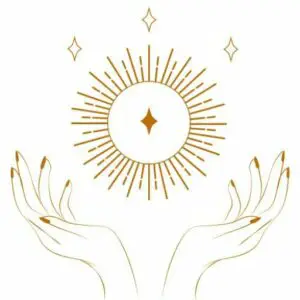As I sat down to pen this piece, the quill in my hand felt especially symbolic.
It's intriguing how symbols, like the upside down heart, can evoke different meanings across cultures and spiritual practices. While, traditionally, a heart symbol is associated with love and passion, an inverted heart can imply a whole new set of connotations.
What does it symbolize, you may wonder? Is it a sign of heartbreak, a call for introspection, or perhaps a symbol of defiance? Like a trail of breadcrumbs, I'll lead you through the labyrinth of interpretations and by the end, you'll see this emblem in a whole new light.
Origins of the Upside Down Heart Symbol
While it's not as widespread as its right-side-up counterpart, the upside down heart symbol has a rich history that's deeply rooted in various cultures and spiritual beliefs. I've traversed the pathway of Symbol Evolution to share the origins of this unique iconography with you.
The upside down heart was first seen in ancient civilizations, where it held a variety of meanings. Often, it symbolized a vessel pouring out love or life force. Over time, the symbol continued to evolve and change, adapting to the spiritual and cultural norms of different societies.
The heart iconography, in general, has always been a representation of love and emotion. But the upside down version brings a twist to this universal understanding. In some spaces, it's seen as a symbol of self-love or personal growth, as turning the heart upside down can signify turning inward, focusing on one's own emotional health and well-being.
I hope this brief overview has given you a deeper understanding of the upside down heart symbol. Its journey through time is a testament to the fluid nature of symbols and their meanings, continually reshaped by the hands of humans across different eras and cultures.
Spiritual Significance Explored
Having journeyed through the historical evolution of the upside down heart, let's now uncover the profound spiritual implications this symbol carries.
This symbol often signifies Divine Intervention and Spiritual Awakening. It's not just a mere representation, but a powerful symbol that carries deep spiritual meanings.
- It speaks to a profound Divine Intervention:
- A flipped heart could signify a life turned upside down by divine force. It's a symbol of transformation, a sign that the divine is intervening in your life, guiding you towards a path of enlightenment.
- This intervention isn't always smooth sailing. It can be turbulent, but it's all part of a larger plan, a divine design meant for your spiritual growth and evolution.
- It's also seen as a symbol of Spiritual Awakening:
- An upside down heart may symbolize a journey towards self-discovery, a spiritual awakening that leads to a deeper understanding of oneself and the universe.
- This awakening often involves turning your previous beliefs and perceptions upside down, challenging old paradigms, and embracing a new, enlightened perspective.
Upside Down Heart in Different Cultures
Across the globe, the upside down heart symbol holds a variety of different interpretations; let's delve into how various cultures perceive this unique emblem.
In Western societies, I've observed that the upside down heart often symbolizes anti-love or heartbreak, a stark contrast to the traditional symbol of love and affection. It's a symbolic variation that communicates a departure from the norm, expressing feelings of sadness or disillusionment.
In the East, particularly in Buddhism, the upside down heart is seen differently. It's considered a representation of an open heart, symbolizing the virtues of compassion, openness, and understanding. This cultural interpretation emphasizes spiritual growth and enlightenment.
For the indigenous cultures of the Americas, the upside down heart carries yet another meaning. Here, it stands for balance and harmony with nature, a symbol of respect for the interconnectedness of all things.
These varying interpretations remind us of the richness and diversity of human understanding. It's fascinating how a simple symbol can hold such a multitude of meanings, each reflecting the unique perspective of a culture. The upside down heart, thus, becomes a testament to the diversity of human experience and perception.
Connection to Love and Relationships
In the realm of love and relationships, an upside down heart can communicate a profound depth of emotion, often reflecting a journey that's not always smooth and idyllic. It's a symbol representing an emotional landscape that's complex, filled with highs and lows, and sometimes challenging to navigate.
The upside down heart is particularly linked to two essential aspects of relationships:
- Emotional Vulnerability
- It signifies the courage it takes to open up to another person, revealing our innermost feelings and fears.
- It's about the risk of getting hurt, yet choosing to love anyway because it's the only way to truly connect.
- Relationship Dynamics
- It symbolizes the ups and downs we experience in relationships, reminding us that love isn't always about constant happiness.
- It prompts us to cherish the good times and learn from the difficult ones, thereby fostering growth and deepening our bonds.
Personal Growth and Self-Reflection Implications
Beyond its relevance to love and relationships, an upside down heart also carries significant implications for personal growth and self-reflection. It's symbolic of a transformation journey, a unique path of evolution that I, or anyone else, can embark upon.
The upside down heart challenges me to question the status quo. It pushes me to turn everything I once thought I knew about myself, upside down. It's an invitation to dig deeper, to reassess my values and beliefs. It's a call to engage in a self-discovery process, to learn more about who I truly am, and who I want to become.
In this journey, the upside down heart serves as a reminder that it's okay to be different, to defy norms, to chart my own course. It encourages me to embrace change and to grow from the challenges I face. It nudges me to reflect on my experiences, to learn from them, and to emerge stronger and wiser.
Conclusion
So, what's in an upside down heart?
It's more than just a symbol, it's a spiritual journey.
It's a reflection of our capacity for love, our cultural diversity, and our personal growth.
It's the essence of who we truly are.
Like the heart itself, it beats with life's rhythm, echoing a deeper understanding of our spiritual existence.
So, the next time you see an upside down heart, remember, it's more than just a shape – it's a story of our soul.




